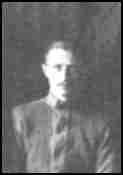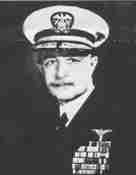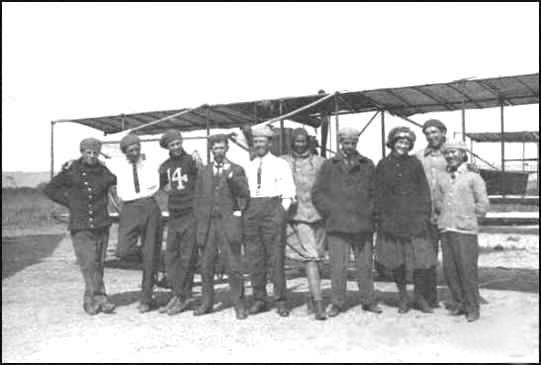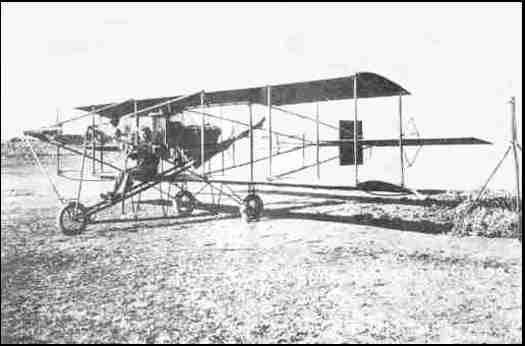

1886-1958 |
 |
 |
|
EB Chirp June 1957, No. 57 |
Curtiss Flyleaf, 1987 |
|
By Merrill Stickler Among the new displays to be seen at the Glenn H. Curtiss Museum of Local History in celebration of the 75th Anniversary of Naval Aviation, is that dedicated to the memory of Rear Admiral John Lansing Callan. The Curtiss Museum is fortunate enough to have a small collection of Admiral Callan's personal memorabilia donated by his sister, the late Mrs. Frederick B. Downing of Kinderhook, N.Y. Admiral Callan's collection of photographs were made available by his niece, Mrs. Frances Vaughan. |
 |
|
Curtiss Flying School, Class of 1912: 1. Floyd E. Barlow 2.
John G. Kaminski 3. Smith 4. W.A. Davis 5. Roy B. Russell 6. Mohan M. Singh 7. John Lansing Callan 8. Julia Clark 9. M. Dunlap 10. Kono Takeshi Curtiss Museum Photo, Callan Collection |
|
To the folks in the little village on Keuka Lake, he became known by the nickname "Lanny". This
handsome young man was born in 1886 in Cohoes, N.Y., the son of Peter J. Callan, a prominent real estate broker. John Lansing Callan,
what could be a more fitting name for a dashing member of the Curtiss Flying School, Class of April, 1911. Here Lanny meet several other
chaps of similar grace and demeanor. William E. Doherty, who became better known as "Gink" and
Beckwith Havens, whose friends
called him "Becky", became close friends sharing the many adventures of learning to fly and watching, among other things, the first Navy
contingent experimenting with the then new Curtiss Triad aeroplane which the Navy designated the A-1. Upon graduation from the
Curtiss school, they became assistant instructors at the school in both land and hydroaeroplane types. |
 |
|
John Lansing "Lanny" Callan, seated in a Curtiss Pusher, poses for this 1912 photograph at the Curtiss Flying School, San Diego, California. Curtiss Museum Photo, Callan Collection |
|
Lanny went to North Island in San Diego Bay, Calif. with the Curtiss winter experimental camp and Flying
School, in November of 1912. During that winter, Curtiss, with the aid of his crew, developed the first experimental flying boat, as well as
training a large number of student pilots from several foreign countries, along with the many Americans who wanted wings. Callan's skill, personality and knowledge of his field, soon brought him a post as a foreign representative of the Curtiss Co. in Italy and England. In October of 1914, he went to Italy for the Curtiss Co. to set up and demonstrate three Curtiss Model F Flying Boats. These boats were built to carry two passengers and were equipped with the Curtiss OX motor. The boats were assembled at Tranto, Italy and were demonstrated for the officers of the Italian Navy, which purchased all three boats. These, and a few old Curtiss Hydroaeroplanes, sometimes called 'Robinsons', after Hugh Robinson, who had demonstrated and sold them years earlier, constituted almost the entire Italian Naval Air Force. There were no regularly established schools or factories to aleviate the problem when Italy found herself involved in the war. Signor Enca Bossi was the Italian representative of the Curtiss Co. and had arranged with the Zari Bros. of Bovisia, Italy, to build the Curtiss type boat from plans sent from Hammondsport. On September 22, 1914, Lanny made a demonstration flight in the first Italian built flying boat on Lake Como before naval officials. The boat was purchased and an order placed for several more. The Italians were convinced that naval aviation was an excellent way to patrol their long and exposed coastlines. In January, 1915, "Signor" Callan was requested by the Italian Naval authorities to oversee the establishment of their first naval aeronautics school at Taranto. Permission was granted by the Curtiss Co., and in February, Lanny became Chief pilot instructor and assistant to the commandant of the school, to advise in all matters pertaining to the course of instruction of both officers and enlisted personnel. Callan was joined by William E. Doherty, Dave McCullough and Charles Fay, all of whom were Curtiss trained pilots Many of their pupils had the opportunity to test their flying experience in actual warfare, and many who learned to fly the boats at Taranto distinguished themselves. Among others were Garrasini, Roberti, Bologue, Caffaratti, Che, and Pellegrini. It is interesting to note that in May of 1915, the Italians captured an Austrian Lohner type, which was built on the Curtiss principles. This boat was shipped to the Nieuport Macchi Co. of Varese to serve as a model for a large number of this type for Italy's war effort. Lanny got his chance to join the American Naval Air Service on February 20, 1917, when he was commissioned a Lieut. in the U. S. Naval Reserve Flying Corps prior to the entry of the United States into World War I. He rose in rank to Lieut. Commander by March 23, 1918. During his service, he was put in charge of the construction and organization of the Naval Air Stations at Mintchie, Le Coiesie and Ille Tudy in France and subsequently, commanded these stations. He also negotiated with the Italian Naval Aviation authorities for training American pilots and for the operation of the U. S. Naval Air Stations in Italy. By May of 1919, he had reached the rank of Commander. Commander Callan was awarded the Navy Cross "for distinguished and heroic service as Pilot of Seaplanes engaged in patrolling the waters of the war zone, in escorting and protecting troops, cargo ships, operating against enemy submarines and bombing the enemy coast, showing at all times courage and high spirit of duty". In 1925 and 1926, he was Liason Officer for the U. S. Navy with the Italian Schneider Cup Team (for racing seaplanes), at Baltimore, Md. and later at Norfolk, Va. Between wars, he was a demonstrator test pilot and salesman for flying boats, and later with his old friends Charles Witmer, Becky Havens, and Jim Boyle from the early Curtiss days, organized Airships Incorporated at Hammondsport. This interesting company manufactured aircraft accessories, lighter-than-air ships, balloons and inflatable life rafts. In August of 1940, Captain Callan was recalled to active duty, serving as U. S. Naval Attache to a number of friendly European Allied governments in exile, where his resourcefullness and professional ability developed excellent sources of intelligence information for the Allied war effort. On May 1, 1948, Rear Admiral John Lansing Callan retired from a very active naval aviation career, which began as a civilian at the Curtiss Flying School at Hammondsport, in 1911, where the United States Navy's first pilot, Lieut. Theodore G. Ellyson, and its first aeroplane were drawn together by the chance of fate and history was made. Rear Admiral Callan died in 1958 This article and these photos were taken in their entirety from a copy of The Curtiss Flyleaf of 1987, a publication of the Glenn H. Curtiss Museum of Local History I invite you to visit their site by clicking on Glenn H. Curtiss Museum of Early Aviation and Local History of Hammondsport, New York. |
 |
Photo and text courtesy of Roy Nagl Editor's Note: This beautiful photograph is only one among many which are available on Roy's website, "Ancient Seaplanes." You will be well rewarded by visiting the site and viewing the many other outstanding entries. You may notice that it is only one of the very many which Roy has graciously shared with us and which have so greatly enriched this website over the years. |
|
Knoxville Journal and Tribune, Knoxville, Tennessee: June 20, 1914, Transcribed by Bob Davis - 3-2-07 Lieut. Porte said today that he thought the craft could be taken to Lake Keuka Saturday morning. It will require four hours to assemble the machine according to Porte, and the launching will take place Saturday afternoon if the present plans do not miscarry." |
"Lanny," as he was known to his friends, was a pilot with the Curtiss Aeroplane Co., Hammondsport, N.Y. from 1911 to 1917. He later was president and general manager of Airships, Inc. at Hammondsport, and vice president of American Aeronautical Corp., and was connected with other manufacturing and business enterprises. During World War I he commanded 3 NAS in Europe, directing the trainng of naval flying in Italy, France and England, and commanded all U.S. Naval Air Forces in Italy. Following service in Washington and Pensacola, he served as attache to several European countries. In World War II he was chief staff officer in Italy and was retired as Rear Admiral in May, 1948. He held many awards, ribbons and medals for conspicuous military service, and likewise received decorations from Italy, Belgium, Yugoslavia, Czechoslovakia, Norway, Mexico and Greece. John served with distinction as Early Bird's fourth president during the year 1932. November, 1958 Number 60 |


|